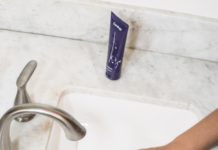Supply teachers are a diverse bunch and have varying approaches to entering a new school. Some supply teachers need no more than a strong coffee when beginning a day on supply while others wouldn’t dream of getting through a school day without the box of emergency supplies they carry in the boot of their car. Experienced old-timers will have whittled their supply teaching tool kit down to an art, over years of experience.
When working on supply, there’s a thin line between being well prepared and over packing. The last thing you need when darting from one lesson to the next in an unfamiliar school is a heavy bag of “essentials” to lug with you. Equally, you don’t want to be left unprepared when faced with a sea of thirty student’s faces in front of you and no back up plan. What you bring also depends on your mode of travel- if you drive, you have the option of bringing more while those on public transport will be limited in what they can carry.
you don’t want to be left unprepared when faced with a class of students in front of you and no back up plan
The fact is, you can’t prepare for every eventuality and there’s no point carrying mounds of resources with you. You don’t need them. The flexible nature of supply teaching means that you will often need to adapt and think on your feet and no amount of extra supplies will prepare you completely for that. Instead, it’s best to pack light and bring only a small number of essentials: your supply teaching tools. Your supply bag will differ from person to person, but here’s some suggestions for supply resources and teacher essentials.
Supply Teaching Care Essentials
Before you even consider walking in to the classroom, you need to take care of yourself. Supply teaching can be a physically demanding and stressful job at times. Care essentials are important for any teacher and often, making sure you’ve had enough sleep can be your best preparation for the day ahead. It’s firstly a good idea to invest in a comfortable pair of shoes as you may find yourself moving between classes, across school and up and down flights of stairs all day long. You should always have on hand a bottle of water as talking to lots of classes all day and having to project or raise your voice can leave you with a dry and sore throat. Other good care essentials to carry with you in any job working in close proximity with lots of children on a daily basis are paracetamol and hand sanitiser.

Supply Teacher Classroom Supplies
So what should you take in to the classroom? Firstly, it goes without saying that you will need pens, but particularly, you should bring whiteboard pens that work- you’ll be surprised how difficult it can be to find one in a classroom when you need one. In the unfortunate but common event of being left without a lesson plan, some supply teachers bring back-up lesson plans, but this can be difficult to gather when you are working across varying subjects and ages. The main classroom resource supply teachers find useful is a group of time-fillers or general class activities. These need not be in the form of sheets or resources but could be educational games, brainteasers or quizzes. Both young and older pupils often respond well to competition-based activities so it’s a good idea to weave this in to some of your back-up lesson activities. You can keep a small number of activities on a USB that you can quickly bring up on the board when required but the fewer physical/ digital resources the better. There will undoubtedly be occasions when you can’t access the computer system or the photocopier so the best time-filler activities are the ones that can be improvised. Being left without a lesson plan when covering as a supply teacher can be bewildering so try and think of it as an opportunity to be creative and have some fun.

Class Management Teaching Tools
Lastly, it’s also a good idea to have a few signature tricks or tools that can help you manage a class, whether that’s something to grab attention, use as a reward or as an incentive. Some supply teachers bring specific tools like a whistle as you may find yourself being asked to cover a PE lesson or lunch duty. But the effectiveness of a tool often depends on the age group. When working in primary school classes, for example, effective tools that grab attention can be in the form of a tambourine or noise maker. While younger years respond to reward tools like stickers and stamps, you may need more creative incentive tools for secondary pupils. In terms of class engagement, something adaptable like a small ball can be a really effective tool, such as for games that involve taking turns or where pupils can select other pupils to contribute by throwing the ball to them. Trying out different tools and experimenting is a great way to hone your skills and develop as an educator.

Read our Supply Teacher’s Survival Guide for more top tips on preparing for your supply teaching role.
RealiseMe has lots of job opportunities for supply teachers and puts you in control of your supply work direct with schools from your mobile. We offer enhanced pay, as well as friendly support forums.










